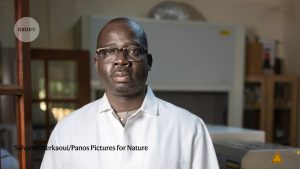
There are stark discrepancies in global research publishing data
From the global north to the continent: The importance of collaboration between African researchers and the international institutions – an article by the EEA ‘Nature in a global context’
Journal editors in the global north spend much time networking at conferences with scientists from well-funded labs, mostly in the United States and Europe. African researchers have less access to these networks, owing to the financial cost and difficulties in accessing visas.
But for researchers in Africa, multiple additional layers, some subtle and others not so subtle, and often caused by unconscious bias, introduce yet more barriers.
Selective journals tend to favour big, ‘splashy’ results that are much more likely to be generated from resource-intense research environments. They also demand that submissions provide the sort of complete data analysis and ancillary documentation that results from the work of specialists, such as biostatisticians, that are integral to many research teams in the global north, but less so in the global south.
A belief is that African scholars should dedicate their limited resources to operational and other sciences rather than discovery sciences. Yet Africa has the greatest genetic diversity in the world, ripe for findings leading to precision-medicine strategies — which take into account patterns found in large data sets as well as a patient’s genomic information — that could be applied worldwide.
There is also less of a culture of peer review in Africa than in the global north and African researchers are much less frequently invited to review manuscripts by selective journals. Active participation in peer review allows an early chance to view new findings and gives researchers an insight into how peer review works, for when they submit their own papers.
We have to refuse to accept the tyranny of the impact factor because it is an extremely biased measure of impact. Research leaders and administrators must strip journal titles from CVs when considering candidates for grant funding, hiring, awards or promotion. They need to show leadership by encouraging submissions to journals. Although an investigator’s publication record remains a good reflection of their impact, this can be measured by a variety of alternative metrics, such as views, downloads and collaborations.
Sluggish local investment has forced African scientists to rely to a large extent on overseas universities and international organizations for funding and opportunities to grow their careers. Researchers at African institutions often collaborate with colleagues in Europe, exchanging knowledge and materials while also spending time in European universities. Half the countries that are on the top ten list for Nature Index articles that feature global north and south collaboration are in Europe. The European Union and the African Union sought to formalise these links. Announced in July, the AU–EU Innovation Agenda aims “to transform and increase the innovative capacities and achievements of European and African researchers and innovators into tangible outputs, such as products, services, businesses and jobs”, according to the European Commission.
In recognition of these challenges, the SFA Foundation has invested roughly US$100 million over the past two years in resourcing African institutions in more than 40 countries, helping them to develop the necessary infrastructure and environment, and human capital, to conduct quality research.
Underlying this is a general expectation from policy watchers and researchers that African nations should invest in science and technology to power Africa’s economic transformation. Every member state of the African Union should allocate 1% of its GDP to research and development. According to the data from the World Bank, Egypt has achieved this in the past few years.
Olusola Oyewole, secretary-general of the Association of African Universities (AAU) in Accra, Ghana, says that although the agenda holds promise for Africa, it needs to ensure that all universities and industries across the continent work together to harness its benefits for good. He is worried that only a few elite institutions will benefit.
It will take a few years for an Africa–EU science fund to be created, given the next EU research programme won’t start until eight years later.
Although many EU–AU initiatives have been beneficial, coordination of resources across the African continent can be a challenge. In 2021, major international donors including the Bill & Melinda Gates Foundation, the UK government and the UK charity Wellcome pulled millions of dollars from the AAS amid a governance crisis, with some programmes and staff transferring to the SFA Foundation.
The AAS told Nature Index that ARISE’s implementation is shepherded by an independent committee, which has representatives from the EU and AU. “This structure minimizes ARISE’s exposure to internal and external risks, such as governance issues,” the AAS says. The implementation of ARISE went on without interruption despite the disruption that affected the AAS work in 2021.
The role of the Global North and South in research collaborations between Latin America and Africa, and what they may tell us about the World Bank and Latin America
Binagwaho isn’t afraid to call for equity in research collaborations between Europe and Africa, and she’s not alone — debates for fairness have intensified in the past five years.
A specialist in emergency paediatrics, and a former health minister in Rwanda, said that research partnerships between global north and African scientists might perpetuate inequalities. She says that having a good white master is like slavery.
International collaboration is an essential force in science. Partnerships often determine how beneficial they are to individuals, institutions and societies. There is nothing more true than collaborations with the global north and south.
There are a few things that have to do with it. The World Bank split countries because the categories of Global north and Global south don’t have definite boundaries. This inevitably leads to some arguable categorizations: South Africa is an upper middle-income country so is a ‘global north’ country in the data, for instance. The same is true for much of Latin America. Data from health-sciences journals were unavailable for analysis, even though they were recently added to the Nature Index.
